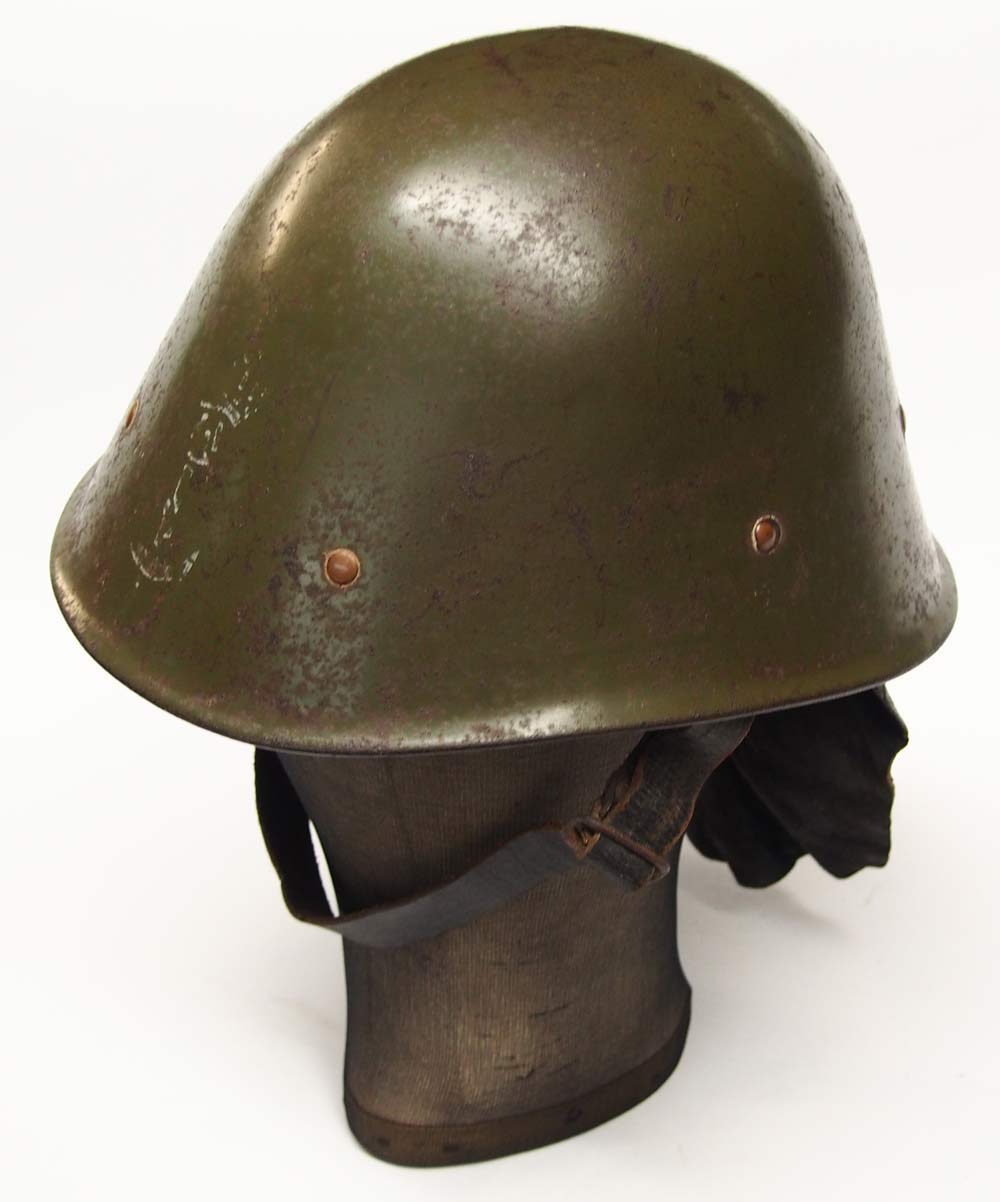 One of the more “unique” tropical helmets of the 20th century was the variation of the Dutch Model 1927 steel helmet. While many steel combat helmets were used in tropical regions during the Second World War, most were the basic helmet simply worn in that theater of operations.
One of the more “unique” tropical helmets of the 20th century was the variation of the Dutch Model 1927 steel helmet. While many steel combat helmets were used in tropical regions during the Second World War, most were the basic helmet simply worn in that theater of operations.
However, the steel combat helmets used by the Royal Netherlands East Indies Army or Koninklijk Nederlands Indisch Leger (KNIL) were actually developed and produced specifically for use by that military force. Instead of issuing the KNIL with the newly adopted Model 1927 helmet, which was used by the Dutch military in the Netherlands the Dutch Minister of War called the development of a modified version.
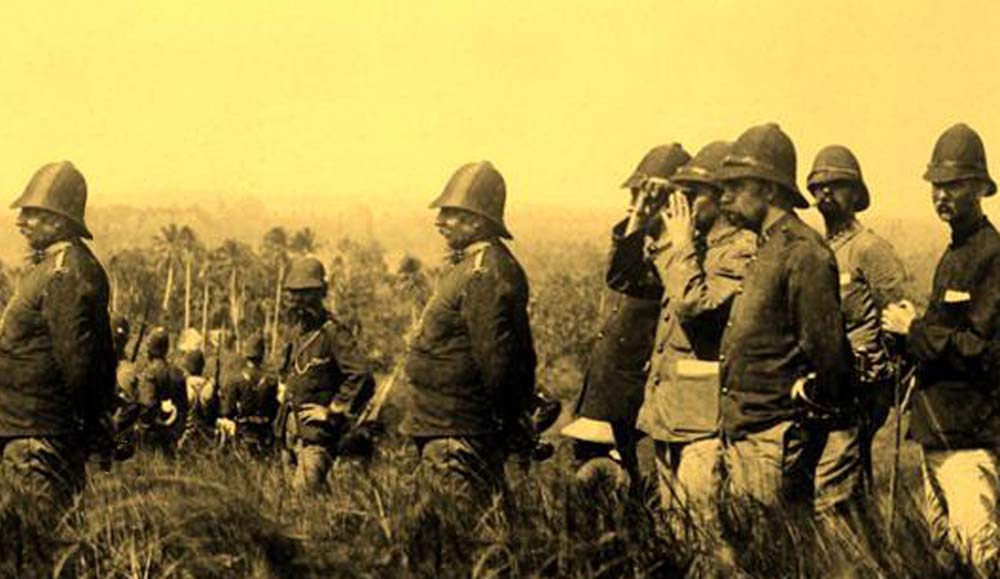
The use of a steel helmet might seem odd, but the KNIL had used a dark cloth “tropical helmet” since the late 1880s. This helmet was a copy of the British Home Service helmet but was truly a black cover rather than dark blue. These were used up until at least the 1920s in the Dutch East Indies.
The helmet – known as a model B during its development – had to meet certain criteria for use in the tropics. This version of the Model 27 featured a brim that was about 2cm shorter than the standard Dutch combat helmet, which made it easier for soldiers to fire from a prone position. Why this was only necessary for helmets for the tropical colonies isn’t clear.
However, the helmet went into production at Verblifa in 1930, and 40 of the early prototypes were produced. These helmets included several ventilation holes at the dome of the helmet, a feature that was determined to reduce the ballistic qualities of the helmet. Since a steel helmet was deemed to be superior to a helmet made of cork or pith the ventilation holes were left out in the subsequent production of the KNIL helmets.
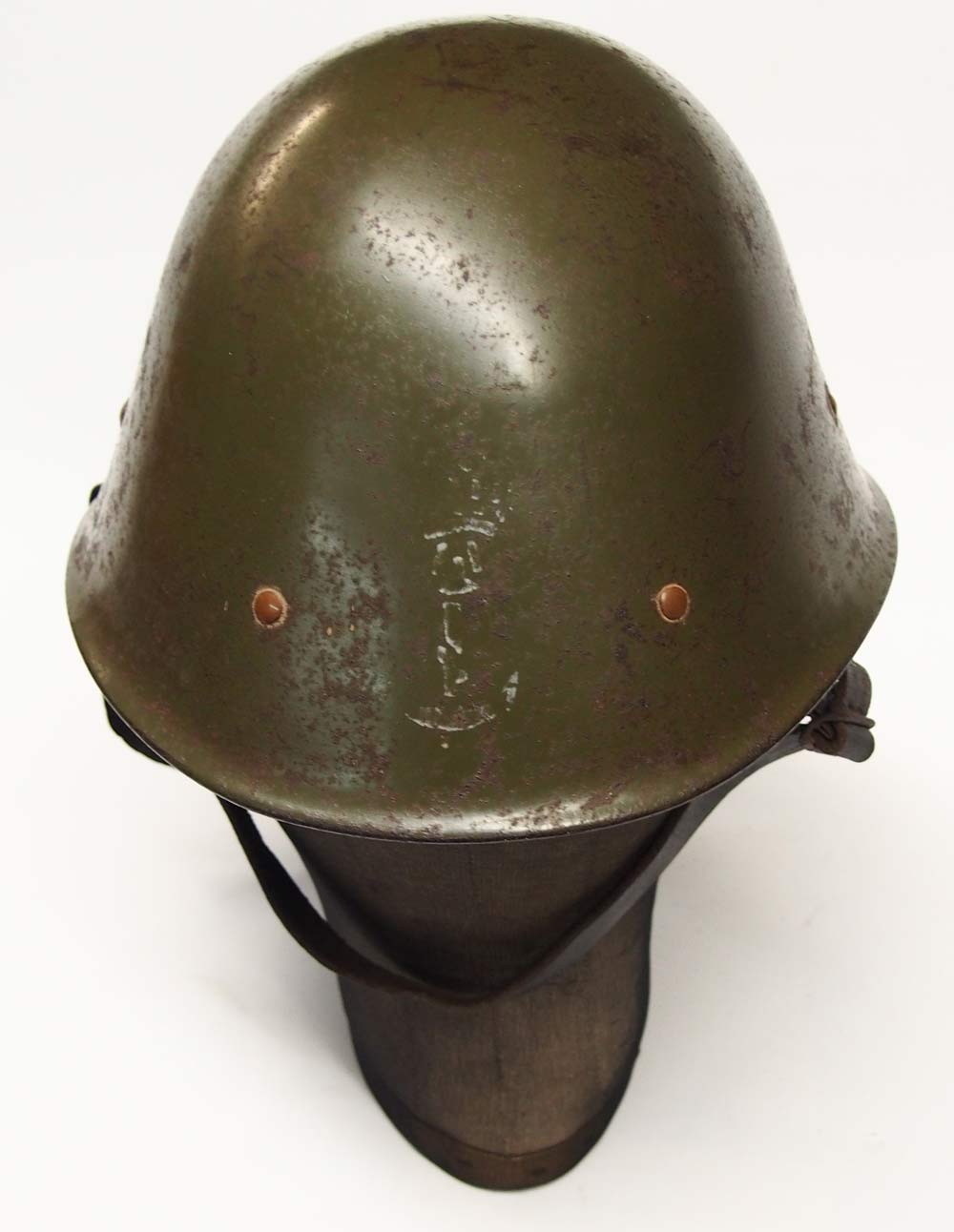
The helmets were painted green and had a profile similar to those combat helmets used by the Dutch Army in the Netherlands.
The designers opted to include an orange-colored felt cloth along with an asbestos lining in the interior to help reduce the effects from the sun, while a leather neck curtain was also added. Given these features it almost seemed as if the designer never understood the conditions in the tropics – but the helmet was adopted and seemed to be liked by the men who wore it.
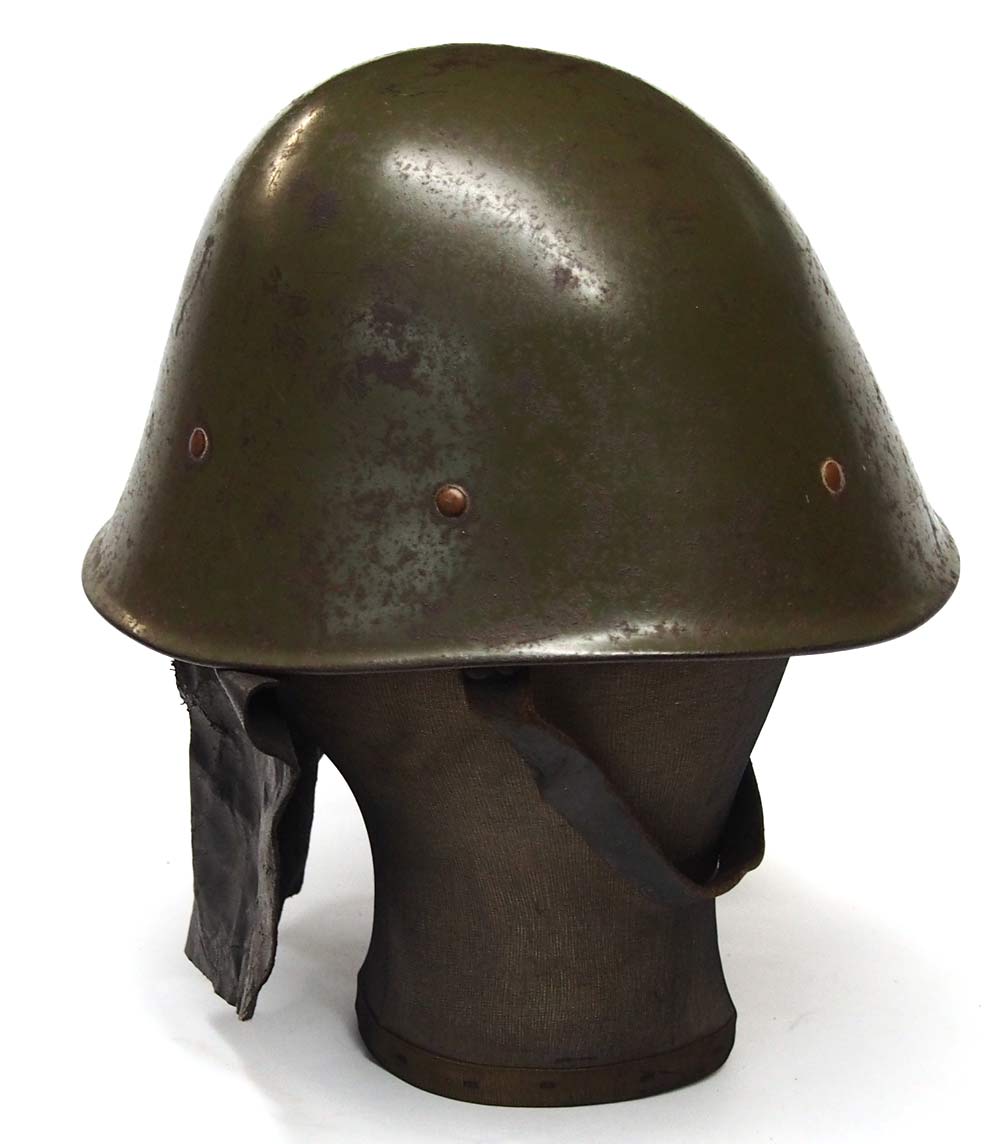
The profile of the helmet shows how the leather neck curtain would have shielded the wearer’s neck, but leather still seems a poor choice of materials.
The Dutch Ministry of Colonial Affairs ordered a production run of 45,000 helmets, and about 4,000 were delivered by May 1939, while another 6,000 were to be delivered each month for the next five months. However, delays were common due to the Dutch military’s inability to source steel after the outbreak of the Second World War in Europe in September 1939. Moreover, the Dutch military began to ramp up production of the Model 1934 steel combat helmet for use in Europe even after the Netherlands declared its neutrality.
By May 1940 only about 28,000 of the 45,000 helmets that had been ordered were actually delivered to the Dutch East Indies. The same month the Netherlands was invaded by Germany and quickly capitulated. The occupation of the Netherlands brought an abrupt halt to the production of the KNIL helmets.
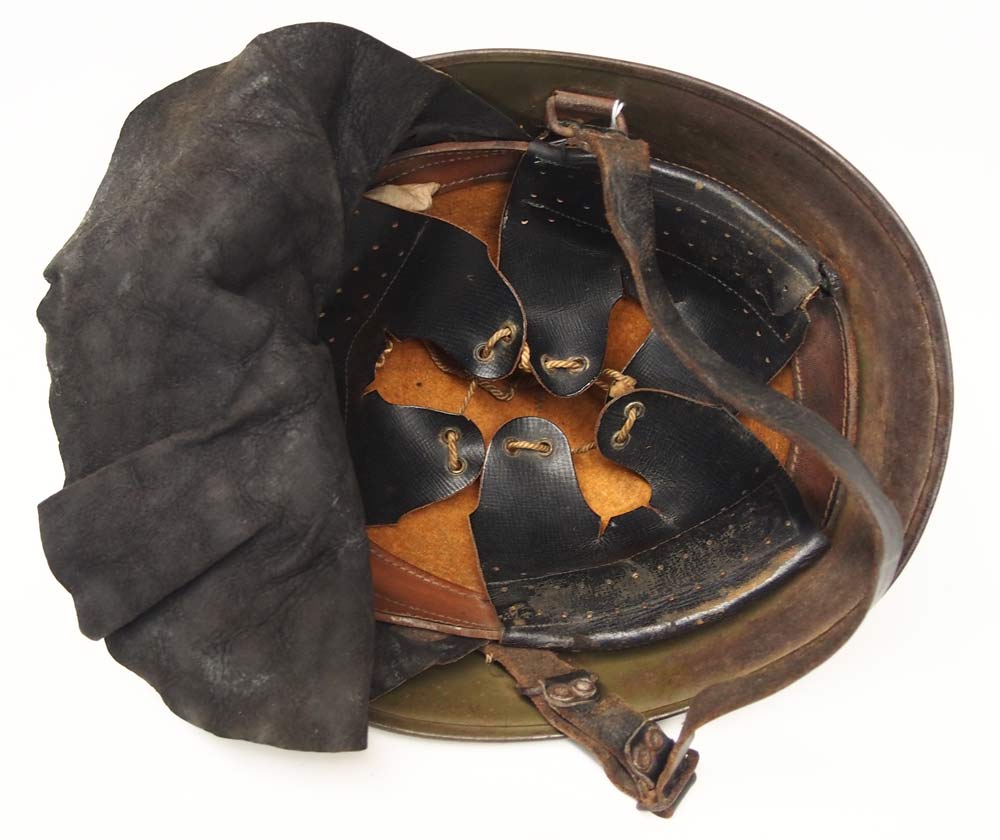
The interior shows the leather liner and the felt to help reduce the heat on the wearer’s head. How effective this was is a matter of debate.
However, the Dutch government in exile recognized that its forces in the Dutch East Indies might be facing an invasion from Japan, and decided to complete the production of the KNIL helmets elsewhere. In a strange twist of fate the Milsco Saddlery Company in Milwaukee, Wisconsin picked up the contract and produced the KNIL helmet in two sizes. The helmet was nearly identical to the Dutch-produced version apart from the fact that the Dutch pattern featured an emblem depicting the Dutch lion on the front. This badge/emblem was not on the Milsco helmets.
The Milsco helmets were supplied to the KNIL before the outbreak of the war in the Pacific, but many were also issued to the Royal Netherlands Navy, which also saw action in the war.
The KNIL had been considered a semi-elite force, but the occupation of the Netherlands left the East Indies forces severely weakened. The KNIL was cut off from Dutch assistance other than the Royal Netherlands Navy. During the Dutch East Indies campaign of 1941-42 most of the KNIL were defeated, and most of the captured soldiers were interned by the Japanese as POWs. More than 25 percent of those captured men didn’t survive the war.
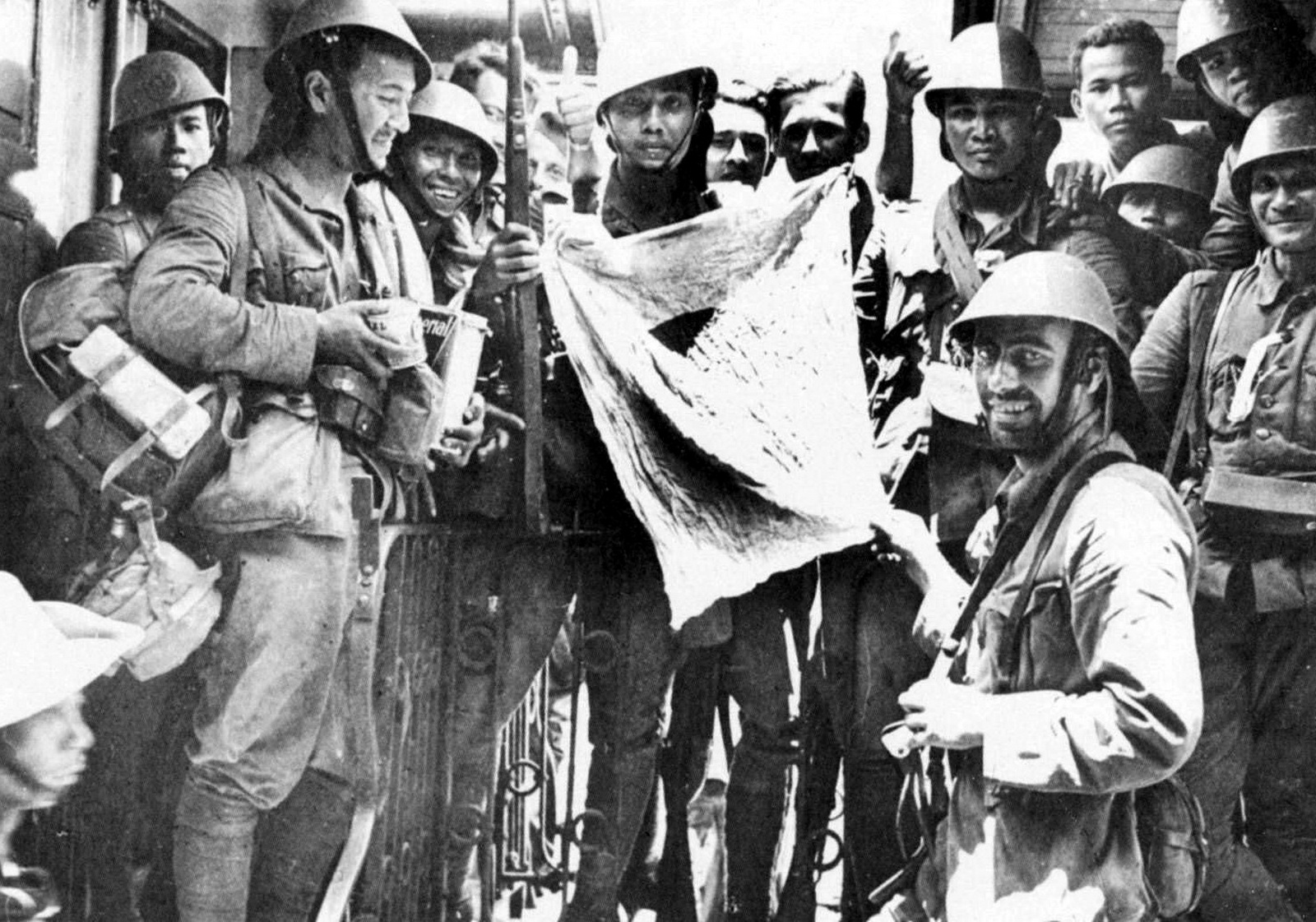
KNIL soldiers in the early stages of the Dutch East Indies campaign. Note the soldier on the far left of the photo appears to be wearing a Dutch-made version of the helmet as noted by the badge/emblem on the front of his helmet.
However, some of the KNIL personnel did escape to Australia and these men took part in the failed attempt to retake East Timor in 1942, and in 1944-45 some units saw action in the New Guinea and Borneo campaigns.
After the war the KNIL was used in two large military campaigns – in 1947 and 1948 – to re-establish Dutch control of Indonesia. Those efforts failed, and with a newly independent Federal Republic of the United States of Indonesia the KNIL was disbanded in July 1950.
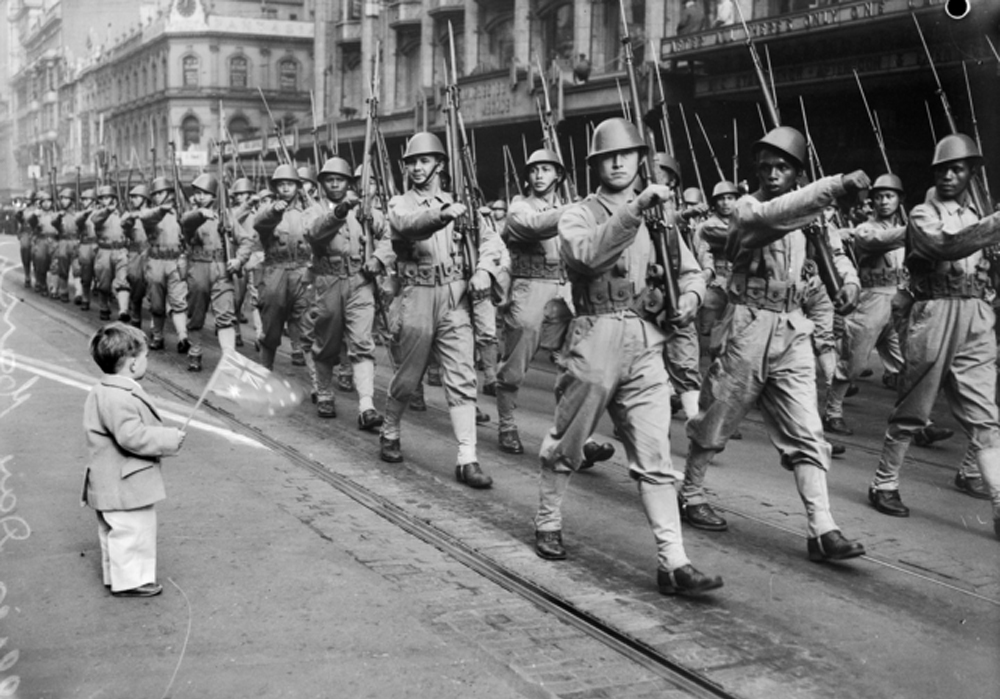
These KNIL soldiers are seen marching through Melbourne Australia in late 1942. These men were fortunate enough to escape from the Dutch East Indies, and were clearly resupplied with American boots and web gear. Note that the KNIL was made up of European as well as native troops and these men fought side-by-side throughout the war.
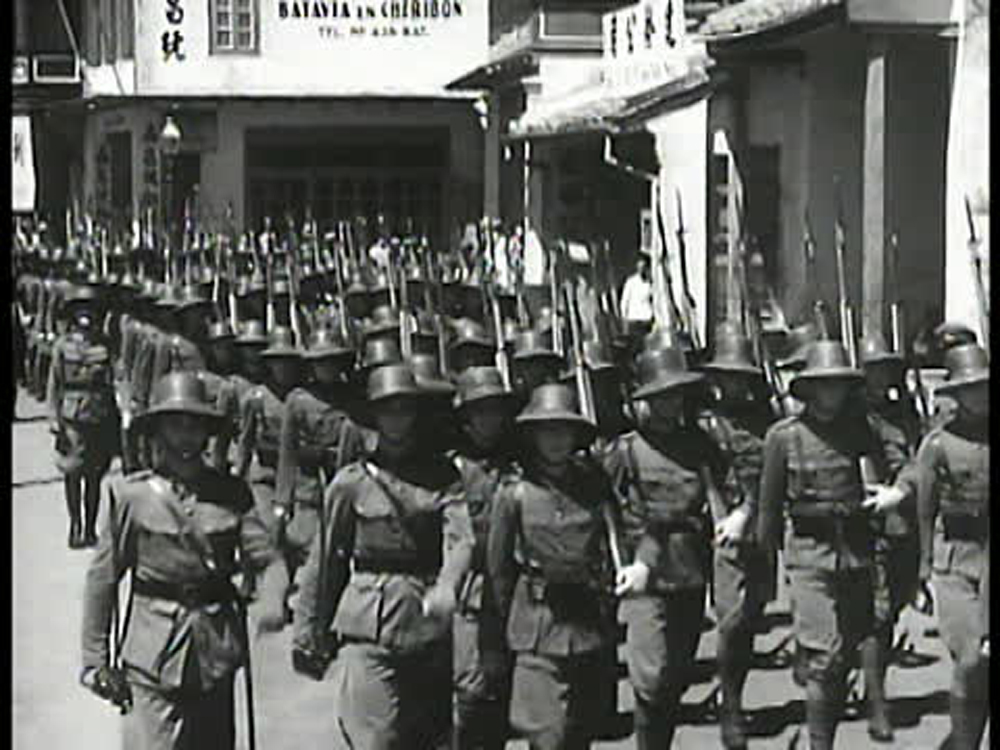
A still image from a period newsreel shows KNIL troops in 1940 wearing the “bamboo” hat that was also issued due to shortages of the steel helmet. The brim of this helmet could also be worn up to aid with shouldering the rifle.
As a final note some of the KNIL helmets were also issued to Dutch colonial troops in Surinam, a Dutch colony in South America, and those units helped restore order in the Netherlands at the end of World War II. In that case the helmet designed for the tropics actually was used in the mother country in Europe.
Peter Suciu
August 2019

Dear Peter, if the shown Milsco helmet with anchor is in your collection, can you please check my theory and assumption? In the leather or inside of the helmet, I expect you to find an imprint or stamp with “2”. Can you validate an confirm?
Best regards of a Dutch Helmetologist, Michael Fenn